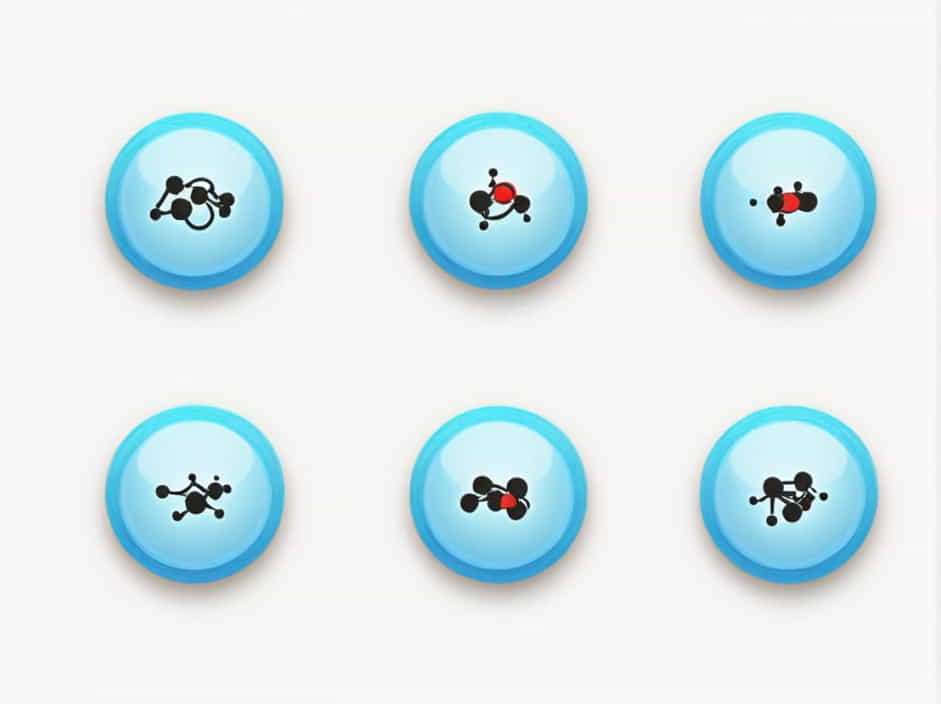In chemical kinetics, order and molecularity are essential concepts that help describe how chemical reactions occur and at what rate. While both terms relate to the rate of a reaction, they have distinct meanings.
✔ Order of a reaction refers to the relationship between the concentration of reactants and the reaction rate.
✔ Molecularity of a reaction is the number of molecules that collide in an elementary reaction step.
Understanding these concepts is crucial for predicting reaction behavior, optimizing industrial processes, and studying reaction mechanisms.
What Is the Order of a Reaction?
Definition of Reaction Order
The order of a reaction is the sum of the exponents of the concentration terms in the rate equation. It represents how the rate of reaction depends on the concentration of reactants.
Mathematically, if the rate law for a reaction is:
✔ m and n are the orders of reaction with respect to reactants A and B.
✔ The overall order is m + n.
Types of Reaction Order
1. Zero-Order Reaction
✔ Rate is independent of reactant concentration.
✔ Rate equation: Rate = k.
✔ Example: Decomposition of ammonia on a platinum surface.
2. First-Order Reaction
✔ Rate is directly proportional to one reactant’s concentration.
✔ Rate equation: Rate = k[A].
✔ Example: Radioactive decay of uranium-238.
3. Second-Order Reaction
✔ Rate depends on the concentration of two reactants (or one reactant squared).
✔ Rate equation: Rate = k[A]² or Rate = k[A][B].
✔ Example: Reaction between hydrogen and iodine.
4. Third-Order Reaction
✔ Rate depends on the concentration of three reactants (or combinations).
✔ Rate equation: Rate = k[A]²[B] or similar.
✔ Less common due to lower probability of three-body collisions.
How to Determine Reaction Order?
-
Using Experimental Data
✔ Plot concentration vs. rate to determine the exponent values.
✔ Compare different trial data. -
From Rate Law Expression
✔ If given the rate equation, sum the exponents to get reaction order. -
Graphical Method
✔ Zero-order: Straight line when plotting [A] vs. time.
✔ First-order: Straight line when plotting ln[A] vs. time.
✔ Second-order: Straight line when plotting 1/[A] vs. time.
What Is Molecularity of a Reaction?
Definition of Molecularity
The molecularity of a reaction refers to the number of reactant molecules involved in an elementary reaction step.
Unlike order, molecularity is always a whole number and is determined by the reaction mechanism.
Types of Molecularity
1. Unimolecular Reaction
✔ Involves one molecule breaking down or rearranging.
✔ Example: Decomposition of ozone (O₃ → O₂ + O).
2. Bimolecular Reaction
✔ Involves collision between two molecules.
✔ Example: NO + O₃ → NO₂ + O₂.
3. Termolecular Reaction
✔ Involves collision between three molecules (rare).
✔ Example: 2NO + O₂ → 2NO₂.
Differences Between Order and Molecularity
| Property | Order of Reaction | Molecularity of Reaction |
|---|---|---|
| Definition | Sum of concentration exponents in rate law | Number of molecules in an elementary step |
| Whole Number? | Can be fractional or zero | Always a whole number |
| Experimental? | Determined from experimental data | Determined from reaction mechanism |
| Example | First-order, second-order, etc. | Unimolecular, bimolecular, etc. |
Why Are These Concepts Important?
✔ Predicting reaction rates – Helps in understanding how fast a reaction proceeds.
✔ Industrial applications – Used in designing chemical processes and reactors.
✔ Pharmaceuticals – Helps in drug formulation and stability studies.
Both order and molecularity play a vital role in understanding chemical reactions. While order is derived from experiments and can be fractional, molecularity is theoretical and always a whole number. Mastering these concepts enables better control over reaction kinetics and mechanism studies.
